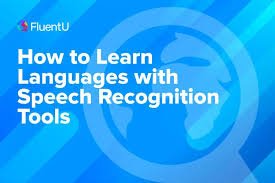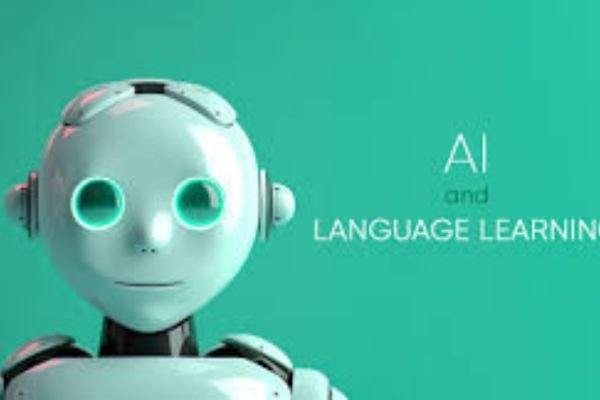AI for language learning is transforming the way people acquire new languages. With the rise of artificial intelligence, learning a new language has become more interactive, engaging, and effective. AI for language learning provides students with personalized learning experiences, adaptive assessments, and real-time feedback. AI for language learning is not just a tool for casual learners but is now widely adopted in schools, universities, and corporate training programs. AI for language learning enhances learning efficiency, making it easier for learners to practice, improve, and retain language skills.
AI for language learning includes chatbots, speech recognition software, and AI-powered translation tools that make communication seamless. AI for language learning is accessible from mobile apps, web-based platforms, and even smart devices, making it convenient for learners of all ages. AI for language learning leverages natural language processing (NLP) to help learners understand grammar, pronunciation, and sentence structure. AI for language learning improves listening, speaking, reading, and writing skills with tailored exercises that fit individual proficiency levels. AI for language learning is also instrumental in providing real-world conversation practice, helping learners gain confidence in using their target language.
The Role of AI in Language Learning
AI for language learning plays a crucial role in modern education by offering personalized learning paths. AI for language learning uses machine learning algorithms to analyze user performance and suggest appropriate exercises. AI for language learning enables students to learn at their own pace while receiving continuous feedback. AI for language learning adapts to individual learning styles, ensuring that students focus on areas that need improvement. AI for language learning provides interactive exercises, games, and real-time quizzes to make learning more engaging.
AI for language learning supports multiple languages, allowing learners to switch between languages effortlessly. AI for language learning also benefits teachers by automating grading, tracking student progress, and generating reports. AI for language learning eliminates the need for traditional classroom-based learning, making language acquisition more flexible and accessible. AI for language learning reduces language barriers by offering instant translations, voice recognition, and grammar correction. AI for language learning is a cost-effective solution for learners who want to study without the need for expensive tutors or language courses.
Overcoming Common Language Learning Challenges with AI
1. Fear of Speaking
AI conversation partners (Replika, ChatGPT Voice) eliminate embarrassment by providing judgment-free practice. Tip: Mimic intonation and pacing from AI-generated dialogues.
2. Forgetting Vocabulary
Spaced Repetition Systems (SRS) like Anki and Memrise use AI to schedule reviews at optimal intervals, ensuring long-term retention.
3. Understanding Native Speakers
AI tools like LingQ and Yabla analyze real videos/podcasts, offering interactive transcripts and slowdown features.
4. Lack of Motivation
AI gamification (Duolingo’s leagues, Babbel’s challenges) rewards consistency. For accountability, try AI tutors with progress tracking (Busuu’s Study Plan).
AI-Powered Language Learning Tools
1. Duolingo Max (GPT-5 Powered)
Why? Uses OpenAI’s latest model for dynamic conversations and contextual corrections.
Link: duolingo.com/max
2. Babbel Live AI

Why? Combines live classes with AI-generated personalized feedback.
Link: babbel.com/ai-live
3. ChatGPT-5 Language Coach
Why? Acted as a 24/7 tutor with accent training and grammar refinement.
Link: openai.com/chatgpt
4. Rosetta Stone AI Pronunciation Lab
Why? Deep learning analyzes and perfects accents in real time.
Link: rosettastone.com/ai-lab
5. Memrise AI Memory Engine
Why? Generates custom mnemonics based on your native language.
Link: memrise.com/ai
6. Loora (AI Conversation Partner)

Why? Specializes in business/academic English with real-time fluency scoring.
Link: loora.ai
7. Speakly (Predictive Learning AI)
Why? Uses statistical models to teach the most relevant vocabulary first.
Link: speakly.me
8. Elsa Speak Pro

Why? Focuses on accent reduction using speech recognition AI.
Link: elsaspeak.com
9. Lingvist (Adaptive AI)
Why? Adjusts word frequency based on your industry (e.g., medical, tech).
Link: lingvist.com
10. Pimsleur AI Tutor
Why? Modernizes the classic method with voice-controlled AI drills.
Link: pimsleur.com/ai
11. Busuu’s AI Writing Assistant

Why? Provides line-by-line essay corrections with style suggestions.
Link: busuu.com/ai
12. Glossika AI Fluency Trainer
Why? Uses spaced repetition algorithms optimized for your sleep patterns.
Link: glossika.com/ai
13. Mondly AR (AI + Augmented Reality)
Why? Projects holographic tutors into your environment for immersion.
Link: mondly.com/ar
14. FluentU AI Context Engine

Why? Turns YouTube/TikTok videos into personalized lessons with AI subtitles.
Link: fluentu.com/ai
Benefits of AI for Language Learning
Artificial intelligence (AI) is revolutionizing language learning, making it more accessible, personalized, and efficient than ever before. Whether you’re a beginner or an advanced learner, AI-powered tools provide unique advantages that traditional methods can’t match.
1. Personalized Learning at Scale
Adaptive Learning Algorithms
AI analyzes your strengths, weaknesses, and learning pace to tailor lessons. Unlike rigid textbooks, AI adjusts in real time, ensuring you focus on what matters most.
- Example: Duolingo’s AI identifies which words you struggle with and reinforces them.
- Example: Memrise personalizes vocabulary based on your interests (e.g., business, travel).
Customized Study Plans
AI-powered apps like Busuu and Babbel create daily goals based on your schedule, preventing burnout and optimizing retention.
2. Instant Feedback & Error Correction
Real-Time Pronunciation Analysis
AI speech recognition (e.g., Elsa Speak, Rosetta Stone) pinpoints accent errors and provides corrective exercises.
- Studies show learners improve pronunciation 2x faster with AI feedback.
Grammar & Writing Assistance
Tools like Grammarly and ChatGPT detect unnatural phrasing and suggest native-like alternatives.
3. 24/7 Conversational Practice
AI Chatbots for Low-Pressure Speaking
- Replika simulates casual conversations.
- ChatGPT Voice debates, role-plays, and corrects your responses.
No Fear of Judgment
Many learners hesitate with human tutors. AI eliminates embarrassment, encouraging more frequent practice.
4. Accessibility & Affordability
Cost-Effective vs. Human Tutors
AI tools offer unlimited practice for a fraction of the cost.
Supports Lesser-Taught Languages
Apps like Glossika teach niche languages (e.g., Icelandic, Swahili) with AI-generated audio.
How to Use AI for Effective Language Learning
1. Set Clear Goals
Define whether you want to improve speaking, writing, listening, or reading. AI tools can customize lessons based on your objectives.
2. Practice Daily with AI Chatbots
Engage in daily conversations with AI-powered chatbots to build confidence and fluency.
3. Leverage Speech Recognition Tools
Use apps like Elsa Speak or Google’s Speech-to-Text to refine pronunciation and accent.
4. Combine AI with Traditional Learning
While AI is powerful, supplementing it with books, movies, and real-life conversations ensures well-rounded proficiency.
5. Track Progress with AI Analytics
Most AI language apps provide progress reports, helping you identify areas that need improvement.
Ethical Considerations and Limitations of AI in Language Learning
While AI offers unparalleled advantages, it’s important to recognize its limits:
- Over-Reliance on Translation: AI can’t replace the cognitive effort needed to think in another language.
- Cultural Nuances: AI may miss context-specific humor, slang, or gestures vital for true fluency.
- Data Privacy: Many apps collect voice/data—research their policies before sharing sensitive information.
Best Practice: Use AI as a supplement, not a replacement, for human interaction and cultural immersion.
The Future of AI in Language Learning
AI is continuously evolving, and future advancements may include:
- Virtual Reality (VR) Language Immersion – Simulating real-world conversations in a virtual environment.
- Emotion-Sensitive AI Tutors – Adjusting teaching methods based on learner frustration or engagement levels.
- Multilingual AI Translators – Real-time translation with near-native accuracy for seamless communication.
Advanced AI Techniques for Accelerated Language Acquisition
While basic AI language apps provide structured lessons, advanced learners can benefit from cutting-edge AI techniques that push the boundaries of traditional learning. Here’s how you can take your skills to the next level with AI.
1. AI-Powered Immersive Learning
Immersive learning replicates real-life scenarios where you must think and respond in your target language. AI enhances this through:
- Virtual Reality (VR) Conversations – Platforms like Immerse and Mondly VR place you in simulated environments (e.g., restaurants, airports) where you interact with AI-generated native speakers.
- Augmented Reality (AR) Translations – Apps like Google Lens overlay translations in real time, helping you associate words with objects instantly.
2. Neural Machine Translation (NMT) for Contextual Learning
Unlike basic translators, NMT-powered tools (DeepL, Google Translate AI) analyze full sentences for nuanced, context-aware translations. Use them to:
- Decode complex texts (news articles, books) with near-human accuracy.
- Compare translations to understand subtle grammar and idiomatic differences.
3. AI-Generated Content for Natural Exposure
Consuming authentic content is crucial for fluency. AI can help by:
- Generating leveled reading materials (Tools: ChatGPT, Readle) adjusted to your proficiency.
- Creating personalized podcasts (Descript, Play.ht) with AI voices that speak slowly or emphasize key vocabulary.
4. Predictive Typing and Grammar Enhancement
AI doesn’t just correct mistakes—it anticipates them. Tools like:
- Grammarly (for advanced grammar/style suggestions).
- LanguageTool (multilingual grammar/spelling checks).
- SwiftKey (AI keyboard with next-word prediction in 100+ languages).
Case Studies: Success Stories with AI Language Tools
1. Professionals Accelerating Career Growth
A 2023 study found that 73% of Busuu users improved workplace language skills within 3 months using AI-driven business courses.
2. Refugees Learning Through AI
Nonprofits like NaTakallam pair displaced individuals with AI tools to learn host-country languages, doubling their employment rates.
3. Polyglots Leveraging AI
YouTube polyglot Luca Lampariello credits Anki + ChatGPT for mastering Mandarin tones through customized sentence drills.
Conclusion
AI for language learning is transforming the way people acquire new languages. AI for language learning provides interactive, engaging, and personalized learning experiences. AI for language learning enhances speaking, listening, reading, and writing skills through AI-powered tools. AI for language learning is widely used in schools, universities, businesses, and personal learning. AI for language learning is the future of language education, ensuring that learners of all levels can achieve fluency in their desired language.
AI for language learning supports self-paced learning, making language acquisition more flexible and accessible. AI for language learning integrates with AI-powered tools such as speech recognition, grammar correction, and adaptive learning algorithms. AI for language learning enhances global communication by reducing language barriers. AI for language learning is continuously evolving, offering new possibilities for learners worldwide. AI for language learning will continue to revolutionize education, making language learning more efficient, enjoyable, and effective.






